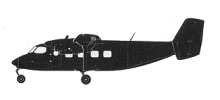Incident Overview

Description
SCAT flight 760, a Canadair CRJ-200, crashed while on approach to Almaty Airport, Kazakhstan, killing all 21 occupants. Flight DV760 operated on a domestic flight from Kokshetau Airport (KOV) to Almaty (ALA). Weather forecast obtained by the crew before departure showed a visibility of 800 m at Almaty with a vertical visibility of 90 m, and temporary reduced visibility to 200 meters. The flight took off at 11:19 hours local time. The captain was Pilot Flying. At 12:00 the flight contacted Almaty Control and received the current weather conditions which showed a limited visibility for runway 23R of 200 m. At 12:40 the flight was cleared to descend to FL80. By then visibility had decreased to 175 m. The captain decided to continue descent and prepare for an approach to decision height. The captain became increasingly stressed by the poor weather conditions. After reaching FL80 the crew were told to remain at that altitude because of another flight in the area. This provoked a strong emotional reaction from the captain. At 12:57 the flight was then cleared down to 1600 m. During the descent the lack of improvement of weather conditions caused a greater and greater irritation on the part of the captain. When turning to finals the runway visual range (RVR) for the first, mid and last part of runway 23R was reported as 275-250-225 m in freezing fog with a vertical visibility of 40 meters. With continuing visibility updates the flight crew kept descending until it was clear that a landing was impossible given the lack of visual contact with the ground. A missed approach was initiated at 13:10 from a height of 180 m. The autopilot was disconnected and the TO/GA button was pushed. Engine power increased and the flaps were raised to 8ø. In the four seconds after pressing to TO/GA button there were no control inputs. Then the captain pushed the control column forward, causing the aircraft to descend. The EGPWS warning sounded as the pitch changed to -9. The observer pilot tried to draw attention on the EGPWS warning but there was no response on the controls by the flight crew. Pitch angle further increased to -16ø and vertical speed was -20 to -30 m/sec. The aircraft impacted the ground at high speed and a -20ø pitch angle and broke up. CONCLUSION: (translated from Russian): The accident with aircraft CRJ-200 UP-CJ006 occurred during the execution of a go-around, in instrument meteorological conditions, without the possibility of visual contact with ground reference points (vertical visibility in the fog did not exceed 40 m), the necessity of which was caused by the mismatch between the actual weather conditions and the minimum conditions for which the crew was certified to land. As a result, the deflection of the elevator towards a dive of the aircraft caused a descent and collision with the ground. It was not possible to uniquely identify the causes of the aircraft’s transfer to a dive from the available data. The Commission did not find evidence of failures of aviation equipment, as well as external to the aircraft (icing, wind shear, wake turbulence) when trying to perform a go-around. The most likely factors that led to the accident, were: – partial loss performance of the pilot in command, which at the time of aircraft impact with the ground was not in a working position; – the lack of CRM levels in the crew, and violation of the Fly-Navigate-Communicate principle, which manifested itself in diverting attention by the co-pilot to conduct external radio communication and lack of control of the flight instrument parameters; – the lack of response to the EGPWS and the actions required; – the impact somatographic illusions of perception of the pitch angle (a nose-up illusion); – increased emotional stress by the crew members associated with the unjustified expectations of improved weather conditions at the time of landing; – failure to comply with the requirements for health examination of flight personnel, which led to the pilot in command flying without the rehabilitation period and without assessment of his health status after undergoing surgery.
Primary Cause
Pilot error, specifically the pilot’s reaction to deteriorating weather conditions and the resulting loss of control during the go-around.Pilot error, specifically the pilot’s reaction to deteriorating weather conditions and the resulting loss of control during the go-around.Share on:





